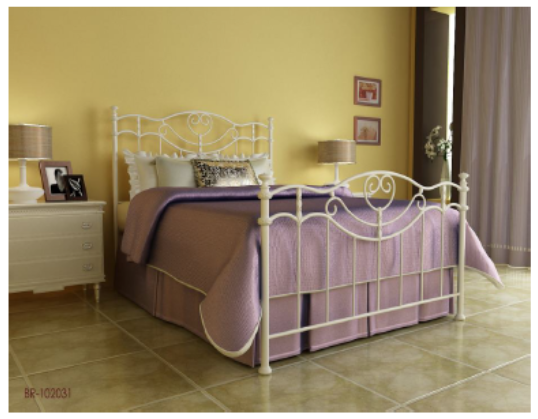
Blog Questions about beds and mattresses answered. And some stories told.
When choosing a bed frame that will stand the test of time, two of the most classic and durable materials are wood and iron. Both have been used for centuries, and both can offer exceptional longevity—if you choose wisely. But which one really lasts longer? In this post, we’ll break down the pros and cons of wood and iron beds, and help you decide which is the better long-term investment for your home.
Wood Beds: Timeless, Warm, and Durable
Wood has been the material of choice for bed frames for generations, and with good reason. A well-constructed wooden bed—especially one made from hardwood—can last for decades, even generations.
Pros of Wooden Beds:
- Durability (with the right wood): Solid hardwoods like oak, maple, walnut, and cherry are incredibly strong and wear-resistant. These types of wood age beautifully and maintain their integrity over time.
- Repairable and Refinishable: One major benefit of wooden bed frames is their ability to be sanded, refinished, or repaired. Scratches and dents can often be buffed out or filled in.
- Aesthetic Appeal: Wood brings warmth and natural charm to any bedroom. It fits well in rustic, traditional, farmhouse, and even modern decor styles.
Cons of Wooden Beds:
- Sensitive to Climate: Wood can be sensitive to moisture and temperature fluctuations. In humid environments, it can warp, swell, or crack if not properly sealed or maintained.
- Weight and Squeaking: Over time, wood joints can loosen and cause squeaks. Softer woods like pine are more prone to dents and wear compared to hardwood options.
- Cost: High-quality hardwood beds can be expensive.
Iron Beds: Strong, Stylish, and Low Maintenance
Iron beds—or metal beds in general—have been around since the Victorian era, prized for their strength, elegance, and resistance to pests and rot. Today, they are a popular choice for both vintage-inspired and modern minimalist bedrooms and they are a particularly good choice in smaller bedrooms because they are more open and airy in design.
Pros of Iron Beds:
- Incredible Durability: Iron beds are extremely strong and can withstand years of use without bending, breaking, or wearing down. A well-made iron bed can last just as long as its wooden counterpart.
- Pest and Moisture Resistant: Unlike wood, iron doesn’t absorb moisture, and it’s not affected by termites or other pests. This makes it a great choice in humid or tropical climates.
- Unique Style: Iron beds often feature ornate or minimalist designs, adding a touch of elegance, vintage charm, or industrial edge to a space.
Which Bed Type Lasts Longer?
When it comes to longevity, both wood and iron beds can last for decades—but it all depends on the quality of the materials and the environment they’re placed in.
- In a humid or pest-prone area, iron might be the better choice for long-term resilience.
- In a climate-controlled environment with proper care, a hardwood bed can be just as (if not more) durable and offers the advantage of being repairable and customizable.
Things to Look for in a Long-Lasting Bed Frame
Regardless of the material, consider these factors to ensure your bed stands the test of time:
- Construction Quality: Look for mortise and tenon joints in wood or welded seams in iron. Avoid cheap particle board or thin, hollow metal frames.
- Finish and Protection: Ensure that wooden beds are sealed against moisture and that iron beds are powder-coated or treated to prevent rust.
- Brand Reputation and Warranty: Choose manufacturers with good reviews and warranties to ensure product quality.
Conclusion: Wood vs. Iron Beds
So, which is better: a wood bed or an iron bed? The answer depends on your personal needs, style preferences, and environment. If you love natural aesthetics and want something that can be repaired a solid hardwood bed is a great investment. If you live in a humid climate or want a low-maintenance option with timeless charm, an iron bed is a better choice.




.png)

 Copyright © 2025 |
Copyright © 2025 |